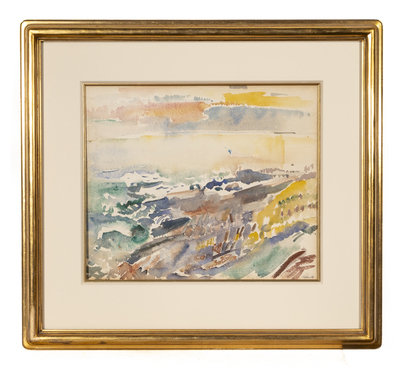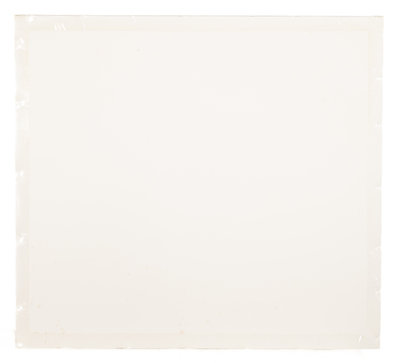Lot 40
John Marin
(American, 1870-1953)
West Point, Maine, 1914
Sale 1339 - American Art
May 16, 2024
2:00PM CT
Live / Chicago
Own a similar item?
Estimate
$20,000 -
40,000
Lot Description
John Marin
(American, 1870-1953)
West Point, Maine, 1914
watercolor on paper
signed Marin and dated (lower right); titled and inscribed (verso)
16 1/2 x 19 5/8 inches.
This lot is located in Chicago.
Provenance:
The Downtown Gallery, New York
Robert Edelmann, Chicago, acquired from the above via the Waddington exhibit by the Main Street Galleries, Chicago
Exhibited:
Chicago, The Main Street Galleries, exhibited as part of the Waddington Galleries, London, exhibition John Marin, Retrospective Exhibition of Watercolors, October 3 - 26, 1963, no. 6, illus.
Literature:
Sheldon Reich, John Marin: A Stylistic Analysis and Catalogue Raisonné, vol. II, Tucson, 1970, no. 14.100, p. 404, illus.
Lot note:
The present watercolor, West Point Maine, 1914, represents a major facet of John Marin’s oeuvre, that of his views of the coastal landscape of Maine, in which he captures the restless energy of the sea in the spontaneous style he developed using watercolors. Through his sensitivity to mass, form, color, and line and their dynamic interchanges, Marin provided a precedent for the Abstract Expressionist movement of the late 1950s.
Born in Rutherford, New Jersey, Marin did not come to art directly, but instead first studied mechanical drawing and mathematics at the Steven Institute of Technology, and then worked as a draftsman for several architects. At the age of 29, he enrolled at the Pennsylvania Academy of the Fine Arts in Philadelphia from 1899 to 1901, and at the Art Students League in New York from 1901 to 1903. Like many young artists of the time, Marin left for Europe in 1905, where he was to remain for five years. In Paris, he supported himself selling tourist etchings of French landmarks, while experimenting with watercolors after discovering the work of James McNeill Whistler, Paul Cezanne, and Henri Matisse. A turning point came when he met the photographer Edward Steichen in Paris, in the summer of 1909. Steichen introduced Marin to American photographer and art dealer Alfred Stieglitz, which led to his first important exhibition at Stieglitz’s New York gallery, 291, in 1910. Stieglitz became Marin’s friend and champion, exhibiting his work more often than any other artist, other than Georgia O’Keeffe.
By 1911, Marin was based in New York and divided the next twenty years between New York, Vermont, and New England. He made his first of what would become annual trips to Maine in 1914. The artist was fascinated by the natural and untouched beauty of the Maine seacoast and landscape, which would provide creative fodder for the rest of his career. It was during this first trip to Maine that West Point, Maine, was executed. Here, the avant-garde ideas he absorbed in Europe, particularly the art of Cézanne and Matisse, are seen at play, yet are melded with the artist’s personal style using luminescent colors and agile brushwork. Horizontal washes of pinkish-yellows and translucent blues billow across the sky. Stronger diagonal strokes of ocher, violet, and turquoise describe the crashing waves and a barely seen shore. The fluid watercolors represent the flux and collision of the natural elements, while the reinforcement of the picture plane reveals Marin’s effort to impose order and structure on the landscape. Through these contrasts, the artist conveys the “great forces at work,” of nature. In West Point, Maine, Marin achieves a translation of motion on paper that represents the artist’s brilliance and impact at its best.
Condition Report
Auction Specialist









